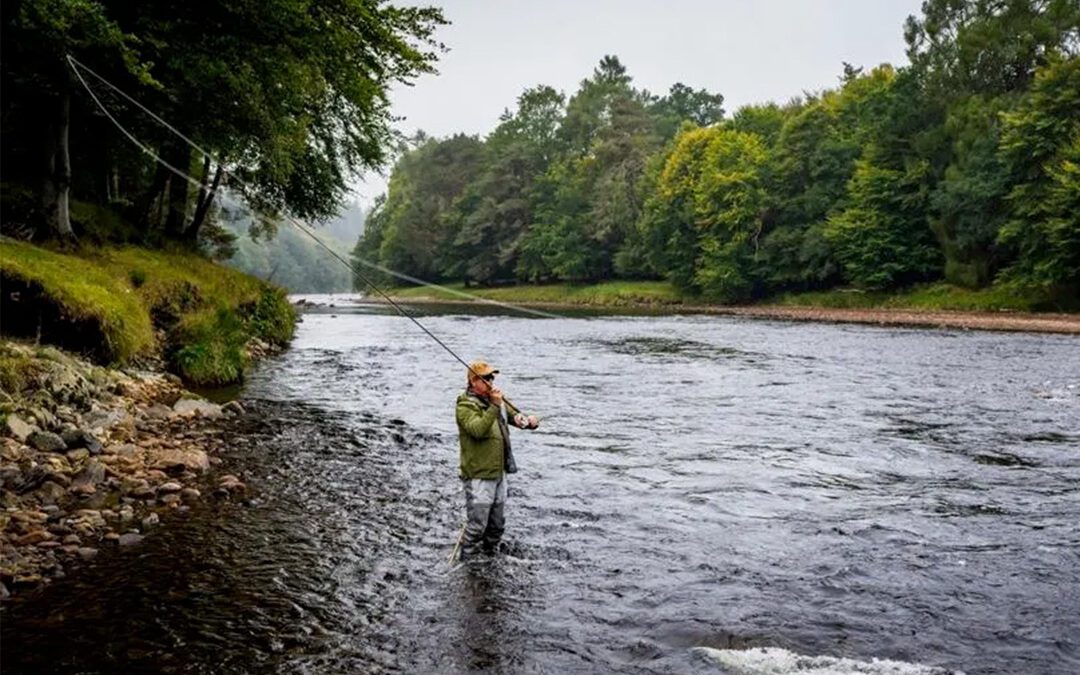They concoct a plan to go undetected as they poach stags, grouse and salmon from three different estates—all in one day. They send letters to the highland owners informing them of their intentions to up the ante of the challenge, signing the notes collectively as the fictitious John Macnab.
Since that time, achieving a Macnab (sans the poaching element)—catching an Atlantic salmon on a fly, shooting a brace of grouse, and taking a stag between dawn and dusk of the same day—has become the baseball equivalent of hitting for the cycle. It’s so permeated sporting lore that other versions of the quest have been mimicked around the world with different species. In South Africa, for instance, a Macnab consists of taking a mountain reedbuck, a grey-winged francolin, and catching a wild trout on a fly from sunrise to sunset of the same day. Many have tried but few have succeeded.
In more recent years, Yanks have traveled to Scotland to attempt the Macnab, a quest requiring competency in three distinct sporting disciplines: rifle and shotgun shooting along with fly casting.
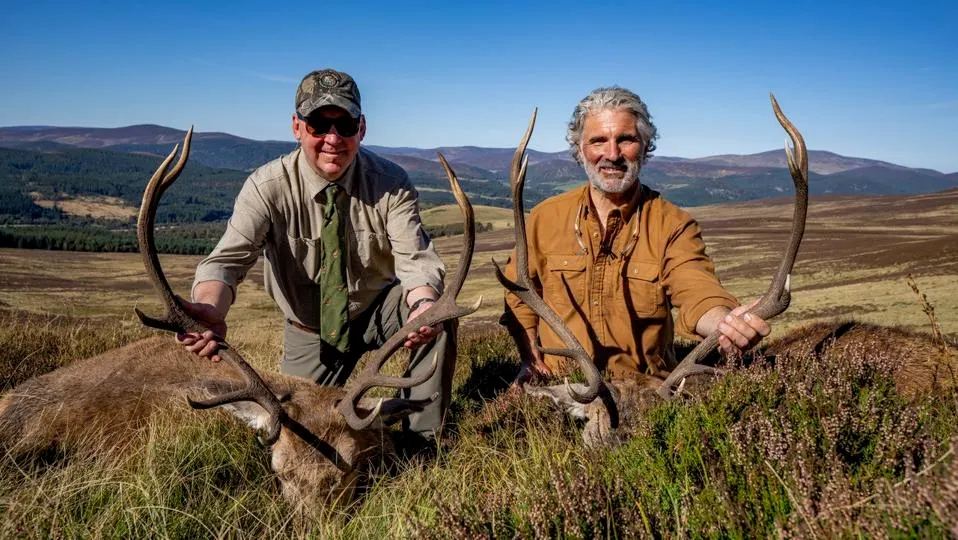
Americans Jeff Lightcap and David Moore celebrate their stag stalking success as part of the Macnab challenge.
For Pennsylvania-based Delaney & Sons, a bespoke boutique sporting travel company that mostly specializes in driven bird shooting across the British Isles and continental Europe, there’s been a surge in interest from Americans willing to hop the pond and attempt the Macnab. “The challenge of the Macnab adds an element of strategy and achievement that many sportsmen who have hunted and fished around the globe find especially intriguing,” says the company’s Liz Delaney. “Each dawn brings hope for participants that today could be the day one might join the ranks of the successful.”
Company co-founder Sean Delaney loved the book and the lore surrounding the Macnab challenge and thought it would be a natural addition for their clientele. “We’ve seen growth in interest each year since we started offering the trips in 2021,” he says. “And we’ve long loved Scotland and its rich sporting heritage so it has been just one more reason to bring Americans here.”
I join a party of Americans seeking the Macnab that includes a conservation philanthropist from Chicago, a New York venture capitalist, and a Texas entrepreneur. All are experienced hunters and anglers looking to add to their sporting resumes as well as memory banks.
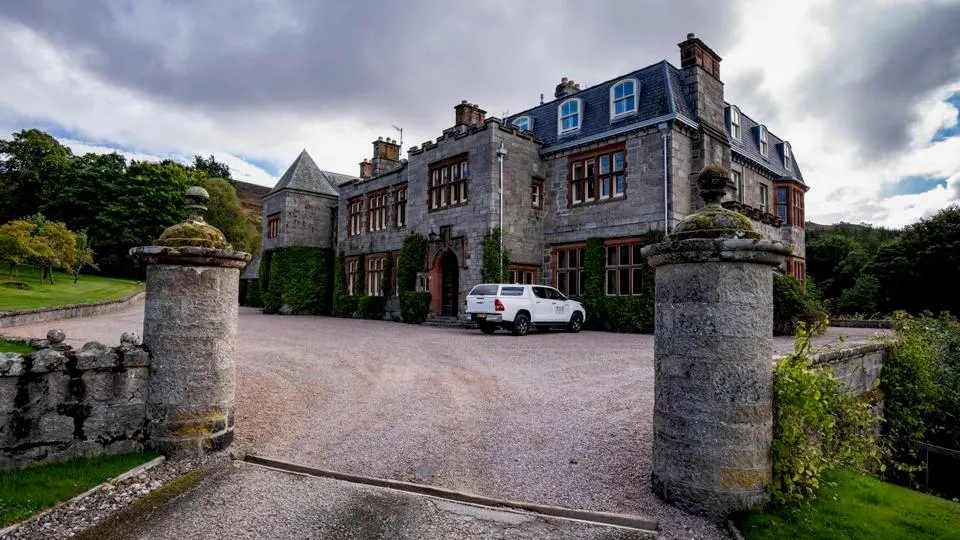
Glenmuick Estate sits in the heart of some of Scotland’s best hunting and fishing.
Our destination is Glenmuick Estate, a 14,000-acre property located just outside the picturesque burg of Ballater, population 1,500. The town might be best known as the destination most likely to produce royal sightings, for the King’s famed 54,000-acre Balmoral shooting estate is located a short drive away. King Charles, in fact, is in residence during our stay, enjoying a September hunt of his own.
Completing the Macnab requires plenty of skill but a great deal of good fortune as well, which starts with the right weather conditions and concludes with optimal numbers of the target species. Unfortunately for our team of Macnabbers, we are greeted by five rare days of complete sunshine and warm temperatures which, we are told, tends to give Atlantic salmon a case of lockjaw.
For Steven Moir, a local gillie (the Scottish equivalent of a fishing guide), optimism is a requisite trait for any angler hoping to land an Atlantic salmon. Moir is such a believer that the more fruitless casts that I make the closer he seems to think I am to finally landing a salmon. That is, while most lose heart the longer success proves elusive, Moir sees each empty cast as a sacrifice to the salmon gods that will eventually win their favor. The six-foot, two-inch Moir looks like he belongs on a rugby field but readily accepts his role of guide and therapist, recognizing that few Americans have the patience to pursue a fish that makes musky fishing (the famed fish of ten thousand casts) look like a sure bet by comparison.
Arm-weary from casting and feeling dejected from my lack of salmon success, Moir pulls out his phone to show me a fish that was caught in the pool in which I am standing…a week ago. Salmon guides here speak of their catches the way gold prospectors talk of finding fist-sized nuggets.
It doesn’t help that salmon stocks have declined in recent years. That, coupled with a rare week of the two words seldom used in Scotland—hot and dry—made one gillie offer: In these conditions, it’s not really fishing…it’s just casterbation.
While the likelihood of catching a salmon was something akin to dancing with Emma Watson, Moir uses my time on the water to teach me the finer points of casting the two- handed spey rod, an extended version of the typical one- handed fly rod used by most American fly fishermen. The long rod, in skilled hands, has the advantage of delivering a fly a great distance with relative ease. Moir employs his skill as a golf instructor to simplify the technique for me, turning my time on the water into daily spey casting lessons.
Realizing that landing a salmon was going to be the toughest part of our challenge, I opt to start the second day by stalking a stag as an icebreaker for the required Macnab trifecta. Perhaps success at one endeavor would affect the karma of the rest of the venture, I thought.
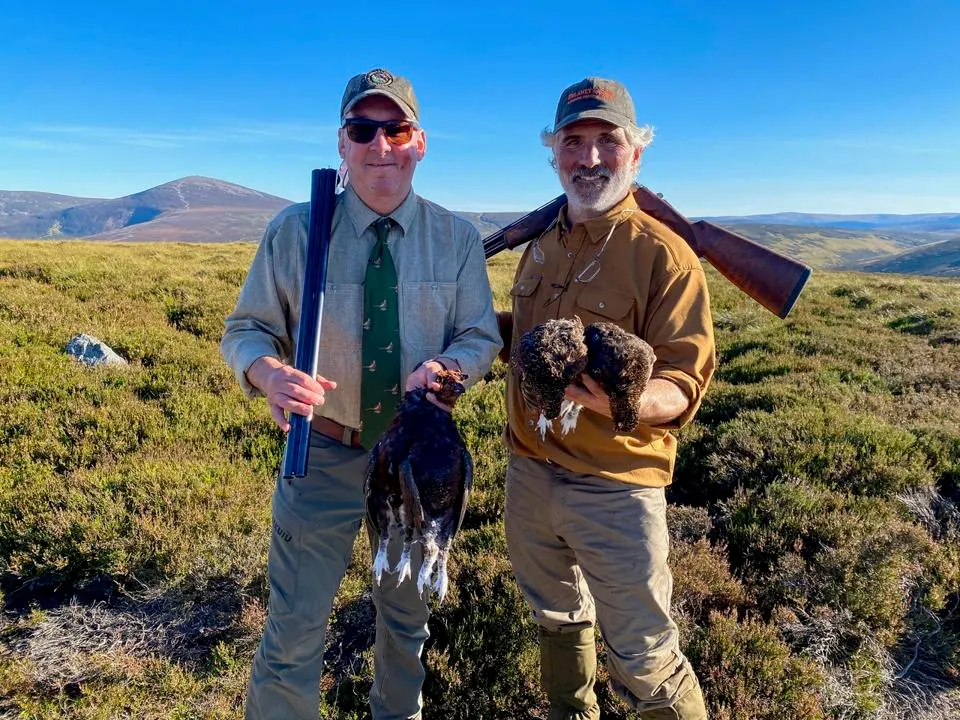
To complete a Macnab, a sport must take a brace (two) of grouse as well as a stag and salmon in one day.
Guiding me into the highlands for red deer, a 300-pound ungulate that lives above timberline amid the picturesque heather, is John Caithness, an affable fifty-something veteran stalker who knows the many hidden coulees and pastures of the estate where stags tend to frequent. As we ascend into the heather, a herd of some 50 hinds (females) and stags crest the hills to our east, apparently pushed from a neighboring estate onto Glenmuick. Clearly, the Macnab gods are smiling.
We wait for the herd to disappear over the hill about a mile away before we begin our stalk across a dale and over the mountain. The hope is that the deer will settle out-of-sight in the valley below, bedding down and giving us a chance to climb above them where we will belly crawl through the heather to make a prone shot inside of 200 yards.
Some twenty minutes later we find ourselves at the crest of the hill, and as we crawl over the peak, we spy the deer below—just as we had hoped. Some fed lazily while others napped, oblivious to our presence. After slithering like snakes through the heather, we reach a small hummock, an ideal vantage from which to rest my Winchester for a steady shot. About 200 yards below us is a stag, carrying the paunch and heavy antlers of an old highland warrior.
I catch my breath from the climb and crawl, settle my aim behind the shoulder and take the beast. With mission one of the Macnab complete, we swap the rifle for a shotgun and begin wandering the heather just a few hundred yards from where the stag fell. Our quarry now is the red grouse, a fowl slightly larger than a Cornish hen that is the most coveted gamebird in the British Isles. I should also note that both deer and grouse are highly prized as table fare, so their harvest serves a utilitarian purpose.
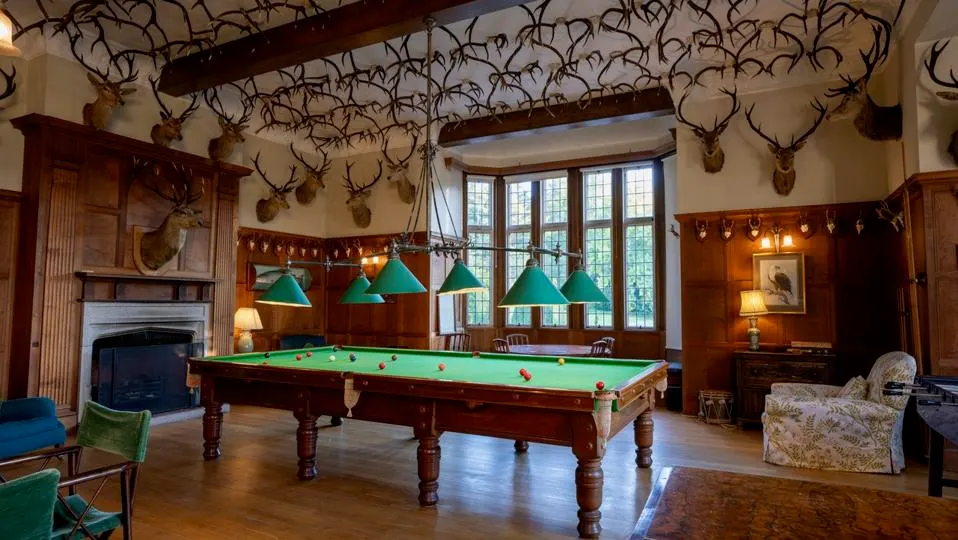
Glenmuick’s decor caters to sporting visitors.
Caithness unleashes his Labrador that was patiently waiting in the truck for his chance to enter the game. Some ten minutes into our hike, the pup flushes a trio of grouse about 30 yards ahead. I connect with the first barrel of the over-and-under but collect only tail feathers with the second shot. The Lab delivers the fallen bird to Caithness, and we continue our trek through the spongy knee-high heather that is reminiscent of walking on a trampoline.
About 20 minutes later, the Lab unearths a lone cockbird, its startled chuckle is a protest at the intrusion into its highland lair. Slightly off balance as the flush catches me mid-stride over a heather bush, I shoot behind the bird with my first cartridge but catch up to it with my second. Once again there is work for the Lab and I am now officially two-thirds of the way to a completed Macnab…with five hours of daylight left to strike gold by landing a salmon.
I reunite with Moir for a return engagement with the River Dee and her finicky salmon. Energized by the prospect of completing the Macnab, I cast with extra fervor. In my mind’s eye, I see one of the fish leap repeatedly from the river as they are wont to do in spectacular fashion with my fly securely attached to its jaw. I picture hundreds of hungry fish in the pool, daydreaming as I cast, still caught up in the euphoria of the possibility of sporting immortality. Of the 137 souls who attempted the Macnab in 2023, however, only 13 succeeded. Nevertheless, Moir’s optimism proves infectious.
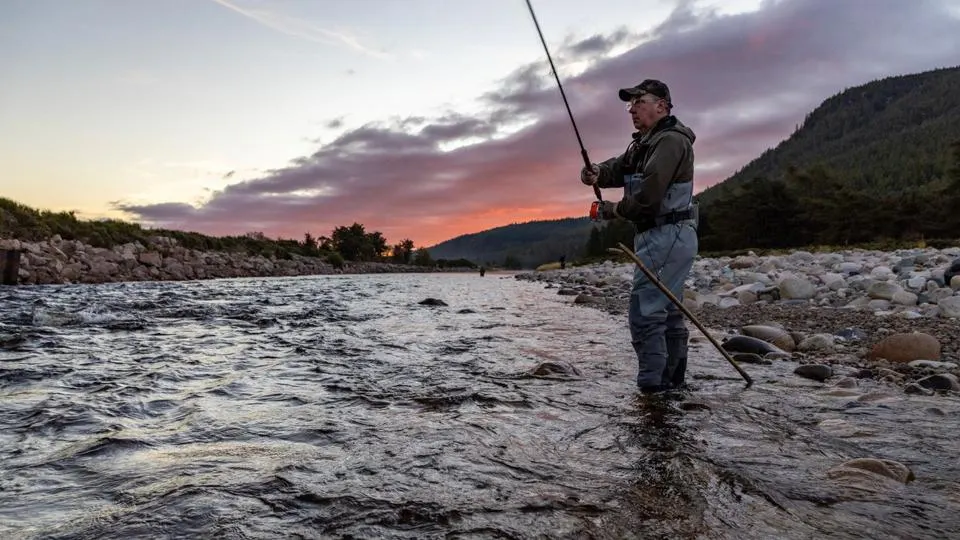
Lightcap attempts to complete the Macnab with only minutes of daylight remaining.
Several hours pass however and, finally, with but 10 minutes of daylight left, I come to the sober realization that the salmon have merely taunted me. All around, the fish jump from the pool I’m standing in, resembling finned middle fingers as if to say: You’re not worthy.
I leave the river, defeated and disheartened—in my delusion thinking I was close to achieving a Macnab. I looked at Moir and wondered what sort of character would dedicate his life to guiding for such a tease of a fish. I wanted to pose that question to him but, instead, simply queried: How is it that Atlantic salmon guides aren’t on perpetual suicide watch?

